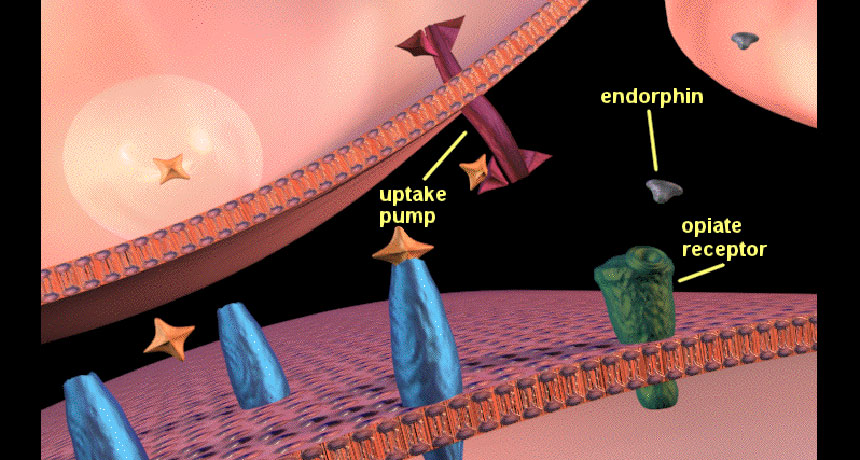Scientists Say: Neurotransmitters
This is a word for the chemicals that shuttle messages between cells

This diagram shows one cell (top) communicating with another (bottom). The top cell releases a neurotransmitter (orange), which binds to the receptors (blue) on the receiving cell.
NIDA







